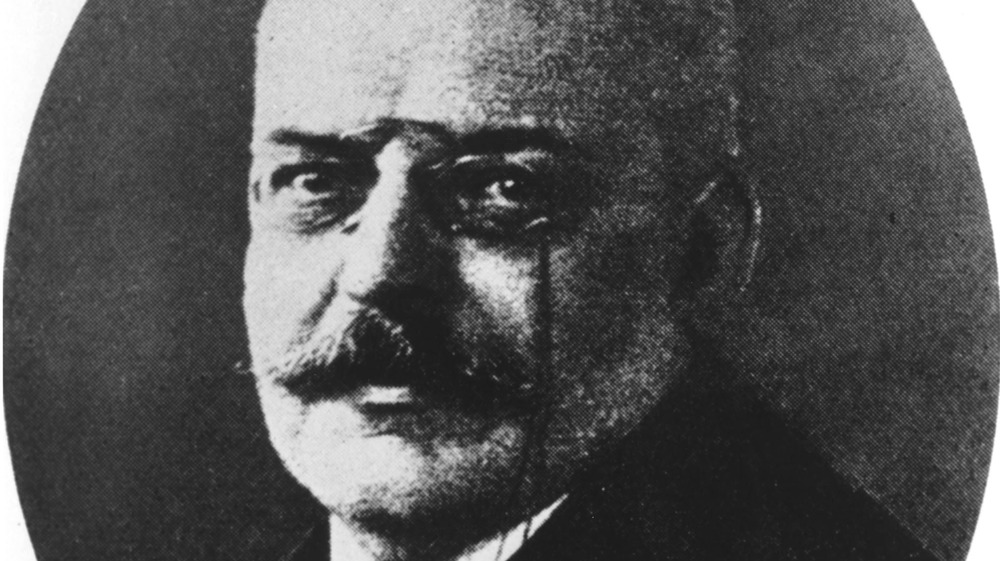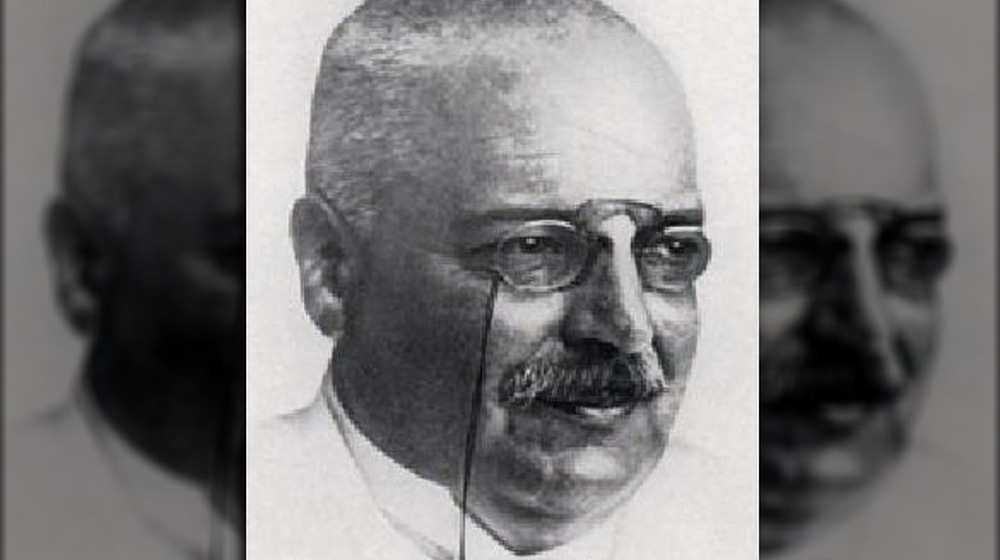This Is Who Alzheimer's Disease Is Named After
It's sometimes described as "the long goodbye." Patients don't forget where they put their keys; they forget what a key is used for. The condition is known as Alzheimer's disease, a form of dementia that changes how an individual thinks, remembers, and behaves, with symptoms that become progressively more pronounced over the course of years.
The Alzheimer's Association tells us that most patients are diagnosed later in life — age 65 and older — but there's still a significant population, around 200,000 or so, who develop Alzheimer's at a younger age — "early-onset Alzheimer's." Those who suffer from Alzheimer's typically live four to eight years after diagnosis, though some live as long as 20 years more. It's the sixth leading cause of death in the United States. But who — or what — was Alzheimer?
The disease takes its name from Alois Alzheimer, a German psychiatrist, born in 1864, according to an article in Dialogues in Clinical Neuroscience, posted on the website of the US National Library of Medicine. After graduating magna cum laude, he took a position at the Community Hospital for Mental and Epileptic Patients in Frankfurt am Main. His first love was anatomy, but he came to regard himself primarily as a clinician, and continued to work within, and conduct research around, the field of psychiatry. He married; he and his wife, Cecilia, had three children, but in 1901, shortly after the birth of the third, his wife died, age 41.
Dr. Alzheimer made remarkable discoveries in the early 20th century
That year was momentous in another way for Dr. Alzheimer. It was in 1901 that he began to treat a woman, identified as Auguste D. She was middle-aged, yet despite her relative youth, she suffered from symptoms of dementia, including memory loss, disorientation, delusions, and hallucinations, before drifting into "severe dementia." She died five years later, at 55 years old, relates Time. Dr. Alzheimer performed an autopsy on her brain. There, he "found the two distinctive characteristics of the disease: tangled clumps of nerve fibers and patches of disintegrated nerve-cell branches," says Time. In addition, per Very Well Health, the patient's brain showed cerebral atrophy — regions of the brain "literally shrink in size."
The discovery was especially significant, coming as it did from a relatively young woman — previously, forms of dementia were simply attributed to the natural process of aging. What he saw meant that the condition arose from a disease, not just old age. Dr. Alzheimer's findings, with his name attached to the disease, were published in 1910.
Research has proven that Alzheimer's typically begins in that part of the brain dealing with newly acquired information. The beginnings are microscopic, but eventually involve nerve damage within the brain: deposits of protein fragments, called plaques, and tangles, which are "twisted fibers of another protein," tau. According to the Alzheimer's Association, scientists are still unclear exactly how these phenomena have a destructive impact on the human brain.
President Reagan suffered from Alzheimer's
More than 100 years after that initial publication, there is no cure for Alzheimer's. Treatments exist to ease symptoms; research continues, says the Alzheimer's Association. Thanks to Dr. Alzheimer's initial research, we know that Alzheimer's is not an inevitable price to pay for living a long life.
Several notable people have died from the disease — President Ronald Reagan struggled with the condition for 10 years before dying in 2004 at the age of 93, reports History. Singer and entertainer Glen Campbell announced he had the disease in 2011. He performed one last tour the next year and died, age 81, in 2017, says the Alzheimer's Site. Gene Wilder, of Willy Wonka fame and frequent film collaborations with Mel Brooks, died of complications from the disease in 2016, according to the BBC. He was 83.
As for Dr. Alzheimer himself: Two years after publication of his findings, he was named Chair of Psychiatry at the University of Breslau. He continued to conduct research and treat patients; he was known as an especially compassionate physician, who eradicated use of the restraints then used commonly on patients with mental health issues. He required his staff to interact humanely with their patients, says Very Well Health. Besides his pioneering research, his methods changed the way medical personnel, including physicians, interacted with their patients. He died December 19, 1915, at the age of 51.


